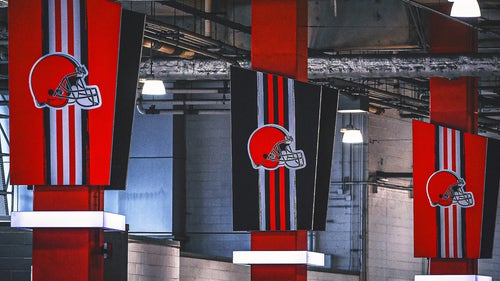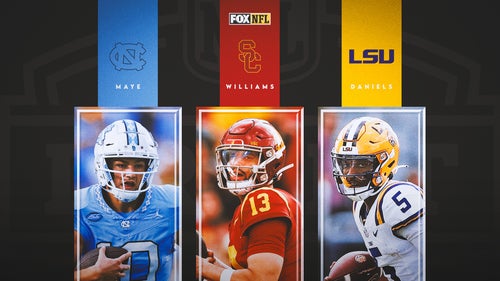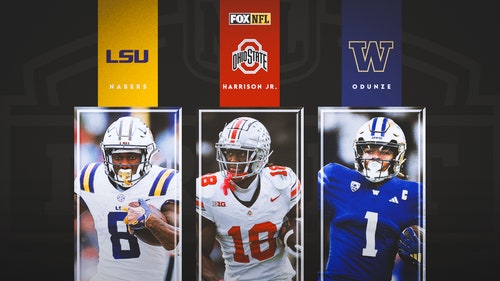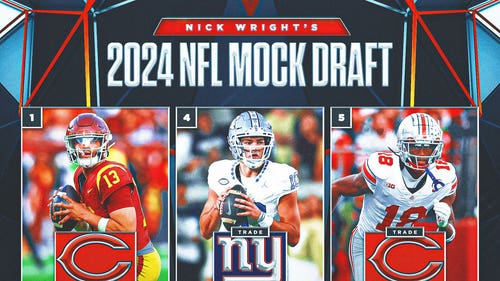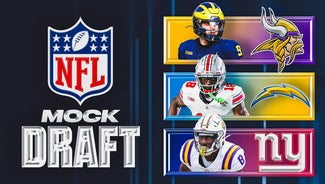
Cleveland Browns: Grades from loss vs. Dolphins
Sep 25, 2016; Miami Gardens, FL, USA; Cleveland Browns quarterback Cody Kessler (6) walks off the field after losing to the Miami Dolphins 30-24 at Hard Rock Stadium. Mandatory Credit: Jasen Vinlove-USA TODAY Sports
Looking at how each Cleveland Browns position group performed in the 30-24 overtime loss to the Miami Dolphins Sunday afternoon.
Miraculously, the Cleveland Browns found another way to lose Sunday. Just when it appeared that victory was within their grasp, they ensured it wasn’t in the most unorthodox of ways, falling to the Miami Dolphins 30-24 in overtime.
Maybe it wasn’t so shocking, given Cleveland’s recent history of unprecedented losses, but fans are still beyond shaking their heads at this one. The Browns truly put everything they had into this game, seemingly doing everything right, yet falling short to a poor Dolphins team. It took overtime, and a missed field goal to get there, before Miami attained good field position and clinched the victory on a touchdown drive. For obvious reasons, this loss stings more than many for the Browns and their fans.
As the team moves forward, what must they work on to solidify positions at which they need improvement? What can the team take from the film and learn before next week’s game against the Washington Redskins? The following is a complete breakdown of each of the major position groups and how they performed in Sunday afternoon’s game.
Sep 25, 2016; Miami Gardens, FL, USA; Cleveland Browns quarterback Cody Kessler (6) scrambles under pressure from Miami Dolphins defensive end Cameron Wake (91) during the first half at Hard Rock Stadium. Mandatory Credit: Jasen Vinlove-USA TODAY Sports
Quarterback: C
Determining a final grade for the quarterback play from Sunday’s game depends on which quarterback is being graded. Both Cody Kessler and Terrelle Pryor took snaps at the position, both in a traditional format, making them each true quarterbacks. At times, Pryor excelled, and at times, Kessler struggled.
Collectively, the quarterbacks threw for 279 yards on 24 completions, as Kessler threw for 244 yards and Pryor threw for 35. For the most part, Kessler looked like a quarterback starting his first career NFL game, but he also looked like one with a reasonable amount of potential.
Unfortunately, the coaching staff did not do what they needed to with Kessler, as they failed to get him into any sort of rhythm. It didn’t help that he fumbled on the first drive of the game after Cleveland forced a turnover, but the plays called for him still were not sufficient in allowing Kessler to take what was given for him. Overall though, the young quarterback out of USC handled the difficult situation nearly as well as he could have as the Browns’ 26th starter since 1999, avoiding an interception despite the relentless pressure.
As for Pryor, merely the amount he played was a surprise. But how he played also pleasantly shocked a lot of Browns fans, as he was electric at times under center. Still, it doesn’t appear that Pryor is a natural NFL quarterback despite playing the position in college, and the Browns cannot proceed with him at quarterback. All things considered, Cleveland’s quarterbacks put forth an average performance, at least allowing their team an opportunity to notch the victory.
Sep 25, 2016; Miami Gardens, FL, USA; Cleveland Browns running back Duke Johnson (29) stiff arms Miami Dolphins cornerback Xavien Howard (25) during the second half at Hard Rock Stadium.The Miami Dolphins defeat the Cleveland Browns 34-20 in overtime. Mandatory Credit: Jasen Vinlove-USA TODAY Sports
Running Backs: B
One refreshing aspect of Sunday’s otherwise miserable game was the solid play of the running backs, especially Isaiah Crowell. The stats both Crowell and colleague Duke Johnson Jr. put up do not do them justice as to how well they played.
Crowell, the featured back for the majority of the contest, ran for 79 yards on 15 carries. Similarly, Johnson ran for 69 yards on 10 carries, an exceptional yards per carry average. Often times, the offensive line struggled to create holes for Crowell and Johnson, especially Crowell. In these instances, the third-year back would put his shoulder down and gain positive yardage anyway.
It is often underestimated what solid running back play can do. There were numerous times in which Crowell created a positive chunk of yardage from a play which was not blocked very well. This kept the offense ahead of the chains and really jumpstarted Cleveland’s successful, or nearly successful, drives.
As for Johnson, many of his carries went to the outside, where his impressive speed was on full display. The former Miami Hurricane also had five receptions for 12 yards, playing a key role on third downs.
Overall, the running backs deserve a “B” because of their consistent play. Each did their job and put the Browns in a position offensively where they could have won the game. How they didn’t is a different story having nothing to do with this unit.
Sep 25, 2016; Miami Gardens, FL, USA; Cleveland Browns quarterback Terrelle Pryor (11) is tackled by Miami Dolphins free safety Reshad Jones (20) during the second half at Hard Rock Stadium. Mandatory Credit: Steve Mitchell-USA TODAY Sports
Wide Receivers: D
Statistically, this was by far the worst game so far this season for Cleveland’s wide receiver unit. Though this is clearly partially due to the absence of rookie Corey Coleman, the Browns failed to step up as a committee to replace him.
Many receivers played and were targeted, more than usual in fact. But only part-time quarterback Terrelle Pryor got into a groove as he led with 144 receiving yards. Also, Pryor impressed with his blocking on the edge, allowing running backs to gain large chunks of yardage. Pryor seemed to do everything at the position and at others, from making contested catches to blocking to running swiftly after the catch.
Besides Pryor though, it was really a struggle for Cleveland receivers all game long. Surprisingly, rookie Ricardo Louis recorded three receptions for a total of 40 yards, making him the second-most productive Browns receiver on the day. Andrew Hawkins caught two passes for 14 yards as well, and rookie Rashard Higgins was targeted but had no receptions.
Based on how well the Browns were running the ball, it would have made sense for them to have a more productive game on the ground. However, they hindered their own ability to maximize the potential they had on offense by putting so many receivers into the game at the same time. But the play of the receivers could have been much better, even though they were not put in the best position to succeed.
Sep 25, 2016; Miami Gardens, FL, USA; Miami Dolphins defensive end Cameron Wake (91) forces a Cleveland Browns quarterback Cody Kessler (6) to fumble the ball during the first half at Hard Rock Stadium. Mandatory Credit: Jasen Vinlove-USA TODAY Sports
Offensive Line: F
The Browns’ offensive line was one of their key issues in the 30-24 loss. Nearly every play, the unit was faced with relentless pressure from Ndamukong Suh and Cameron Wake, which they did not handle very well. Most of all, not only was this pressure difficult to suppress, Miami was able to manufacture pressure on Kessler without blitzing, meaning that they did not need to bring the house to move Kessler out of the pocket. As a result, they were able to still defend the receivers effectively while simultaneously making matters miserable for Cleveland’s quarterback.
Cameron Erving‘s injury clearly had an impact on the line, as any team who is without their starting center will feel the effects. John Greco may not have played horribly, but he was most definitely out of position at center.
As for the rest of the offensive line, Joe Thomas played consistently at left tackle for the most part, even though he did struggle at times to get push for the power rushing attack on the left side. However, Austin Pasztor played an absolutely miserable game, being pushed back on most plays and committing five penalties. Maybe, as Browns play-by-play radio announcer Jim Donovan stated, Pasztor should take a coffee run while the tape is being examined.
In the end, it is up to the offensive line to protect the quarterback and give the running game a boost. Neither of these objectives were reached, even if some of the skill position players covered up these shortcomings. The team surrendered four sacks and allowed their quarterbacks to be rushed all afternoon. As the game wound down, the offensive line could not make the blocks they needed or formulate the pass protection necessary to give the offense a chance.
Sep 20, 2015; Cleveland, OH, USA; Cleveland Browns tight end Gary Barnidge (82) runs the ball against the Tennessee Titans during the first quarter at FirstEnergy Stadium. Mandatory Credit: Scott R. Galvin-USA TODAY Sports
Tight Ends: D
Even though the tight end position plays a significant role in coach Hue Jackson‘s offensive scheme, the tight ends were relatively quiet in this game. Gary Barnidge found himself open several times as the Dolphins released, catching five passes for 66 yards. Still, it was clear that last season’s breakout offensive player was not the primary target for Cleveland at any point in the game.
Beyond Barnidge, the Browns used Seth DeValve at times in a two-tight end power formation. Unfortunately, the look did not confuse the Dolphins or beat the Dolphins in any way, as Cleveland’s power rushing attack was virtually non-existent.
No other tight ends besides Barnidge were targeted as receivers, but the unit was asked to block on rushing plays many times. Despite the success of the running backs, these players did not have solid performances blocking. Mostly, the tight ends didn’t play a large role in this game. But regardless, if they ever are to, they will need to improve in many different facets of their game. It is safe to say that the Browns’ tight ends did little to promote their cause of victory on Sunday.
Sep 25, 2016; Miami Gardens, FL, USA; Miami Dolphins quarterback Ryan Tannehill (17) attempts a pass in the game against the Cleveland Browns during the first half at Hard Rock Stadium. Mandatory Credit: Jasen Vinlove-USA TODAY Sports
Defensive Line: B
It was an interesting afternoon for the defensive line, to say the least. Overall, their performance was solid, as young players stepped up to fill voids at certain points in the game and played well collectively.
Nose tackle Danny Shelton continued to make strides on Sunday, playing one of the better games of his career in stopping the run. A slew of five different Miami running backs were held to a total of 113 yards on 24 carries, mostly due to the stout play of the defensive line. Even the plays which did go for large chunks of yardage were mostly runs to the outside, often plays the defensive line has little direct responsibility in.
The one problem was, and continues to be, Cleveland can simply not get much pressure on the quarterback. Even against a below average offensive line without their starting center, the Browns struggled to get pressure without blitzing. The few occasions when they were able to pressure Miami quarterback Ryan Tannehill, he had trouble getting the ball to his intended receiver. In fact, Tannehill’s three turnovers were each direct reflections on the success of the defensive line’s pass rush in each play.
Though there were points at which Cleveland’s defensive line found the quarterback, they failed to much more often than they were able to. This was partially the case for Tannehill’s impressive game through the air. Still however, the young Cleveland defensive line showed fans many positives, which hopefully can be translated into more rewarded success in the future.
Sep 25, 2016; Miami Gardens, FL, USA; Cleveland Browns linebacker Nate Orchard (44) sacks Miami Dolphins quarterback Ryan Tannehill (17) during the first half at Hard Rock Stadium. Mandatory Credit: Jasen Vinlove-USA TODAY Sports
Linebackers: C
Much of what the defensive line did on Sunday that was positive also applies to the linebackers. Stopping the run was partially a credit to their play as well, as they prevented several runs from all five Miami running backs from becoming more devastating than they were.
The reason the linebackers get a slightly lower grade is due to their failure to manufacture pressure on Tannehill, and their slow reaction time in coverage. At times, it seemed as if the linebackers were useless, as they could never create much pressure, yet could not cover the likes of Kenny Stills, Jarvis Landry and DeVante Parker.
They made some solid plays though, very consistently helping out the run defense for the most part. Christian Kirksey made eight tackles, Demario Davis made swift decisions and Emmanuel Ogbah continued what has already been an impressive rookie campaign.
As a group, these linebackers continued to show Cleveland that they are serviceable. There is room for improvement, but at the same time, there are so many other areas on the roster in much more desperate need of upgrades. For Sunday’s game, the linebackers get a respectable “C” grade.
Sep 25, 2016; Miami Gardens, FL, USA; Cleveland Browns cornerback Briean Boddy-Calhoun (20) celebrates with teammates after scoring a touchdown after intercepting a pass against the Miami Dolphins during the first half at Hard Rock Stadium. Mandatory Credit: Jasen Vinlove-USA TODAY Sports
Secondary: F
Yes, the Browns had two interceptions. One was even returned for a touchdown by little known rookie Briean Boddy-Calhoun, and the other was made on the first drive of the game by Jamar Taylor. But two plays far from captures the story of Sunday’s game; and the story of the game was Miami’s passing attack.
Miami entered the game with the league’s 13th-ranked passing offense, which makes sense considering their three potent downfield threats along with an improving quarterback. Far and away, passing is their greatest strength on offense. This coupled with a depleted Cleveland secondary spelled trouble from the very beginning for the Browns.
This secondary really never had a chance, missing Joe Haden and losing Tramon Williams during the game. As a result of these injuries, other players stepped up, mostly young players, and did what they could. But simply put, everything they could do was far from enough.
Collectively, Miami’s receivers torched Cleveland’s secondary for 319 yards and three touchdowns. Even on plays which were obvious passing plays from the beginning, a receiver found himself open and made it easy for Tannehill.
Safety Jordan Poyer led the team with 10 tackles on the afternoon, which pretty much says it all. The fact that so many tackles were made 15-20 yards downfield is a direct reflection on what Cleveland most has to work on moving forward. Even if it isn’t the young players’ faults individually, the unit as a whole is partially responsible for the failure to get Miami’s offense off the field in many key situations.
Sep 25, 2016; Miami Gardens, FL, USA; Cleveland Browns kicker Cody Parkey (3) reacts after missing a field goal during the second half against the Miami Dolphins at Hard Rock Stadium.The Miami Dolphins defeat the Cleveland Browns 34-20 in overtime. Mandatory Credit: Jasen Vinlove-USA TODAY Sports
Special Teams: F
Cody Parkey missed three field goals. End of discussion. No, but seriously, the special teams unit cost the Browns the game for the second week in a row. Most notably, nine points were squandered due to the field goal unit, as Parkey missed his first, and his final two attempts.
As time expired in regulation, Parkey pulled the kick too far to the left, causing overtime instead of a Browns victory. Actually, Parkey pulled all three kicks wide left, likely meaning that he is swinging his leg and making contact with the ball too soon. Regardless of whether this is fixed or not, Browns fans hope to see their normal kicker back next week.
As for the other aspects of special teams, including punt and kick returns, not much went right or horribly wrong for the Browns. Due to an uneventful game in this respect, other plays made the difference.
Punter Britton Colquitt had the right idea punting for the majority of the game, driving the Dolphins back and toward the sidelines. But his final punt was a very bad one, setting up the Dolphins in Browns’ territory on the possession which eventually ended the game.
Special teams is such a difficult aspect of the game, and it always seems unfair to criticize players for mistakes on very few plays. But in reality, these few plays often cost teams games as was the case on Sunday. Fair or not, a true assessment of the game is not complete without bringing up the topic of special teams and discussing their flaws. In Sunday’s game, these areas of imperfection cost the team the game, automatically failing the special teams unit.
Aug 26, 2016; Tampa, FL, USA; Cleveland Browns head coach Hue Jackson calls a play against the Tampa Bay Buccaneers during the second half at Raymond James Stadium. Tampa Bay Buccaneers defeated the Cleveland Browns 30-13. Mandatory Credit: Kim Klement-USA TODAY Sports
Coaching: F
Many will argue that Hue Jackson made some good decisions in Sunday’s game. After all, he managed the clock fairly well at the end of the first half, and the loss was all Parkey’s fault, right? In reality, no, since the game really shouldn’t have come down to the toe of a kicker signed this week.
The Browns ran the ball effectively all afternoon. But strangely, even with a rookie quarterback starting his first career game, Jackson dialed up 38 passing plays opposed to 32 rushing plays. The circumstances of the game would have called for much different play selection. There were many instances in which Jackson appeared to be trying to overthink the game, when in fact the Browns were on the fast-track to victory if he wouldn’t have interfered.
Much of what Ray Horton did on defense was peculiar as well. For whatever reason, the Browns dropped back into coverage much more than they blitzed on Sunday. However, when they did dial up pressure, three turnovers resulted and Tannehill was flustered. But, seemingly unaware of this, the defense continued to drop more players into coverage than they were using up at the line of scrimmage, yet still got torched in the mid-yardage, over-the-middle passing game.
In the end, losses like this do come down to the coaching staff. Making critical decisions during key points of a game is what coaches are paid to do. While it may seem harsh to give Cleveland’s coaching staff a failing grade for circumstances that did not appear to be wholly in their control, the bottom line is it is their responsibility to come away with wins in games like these.
More from Dawg Pound Daily
This article originally appeared on







































































































































